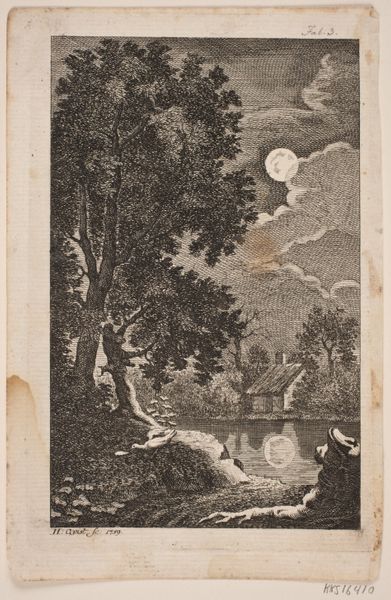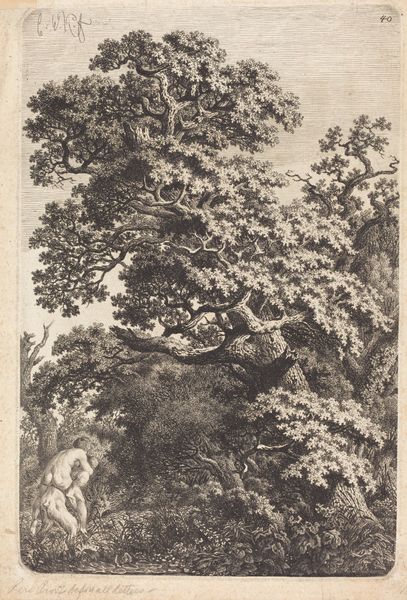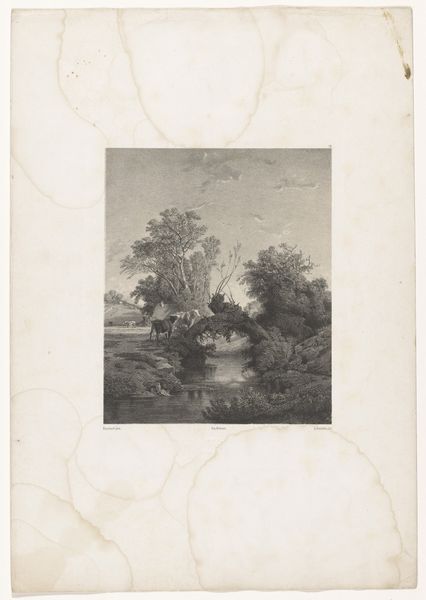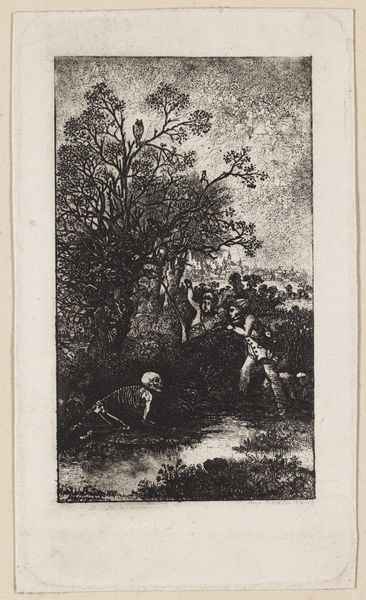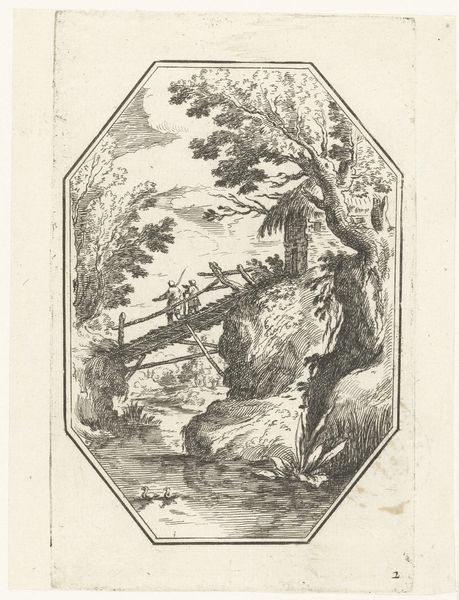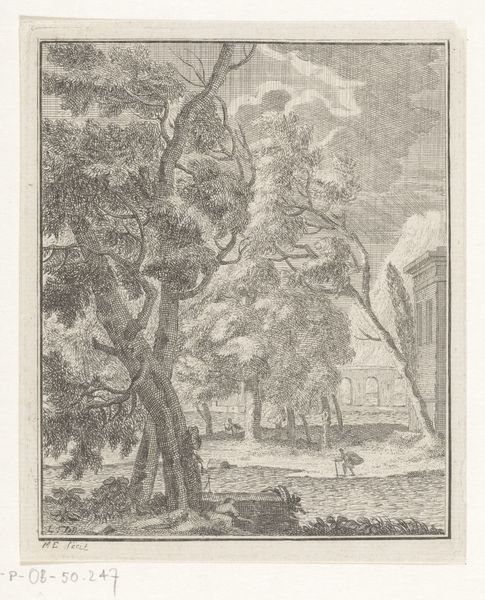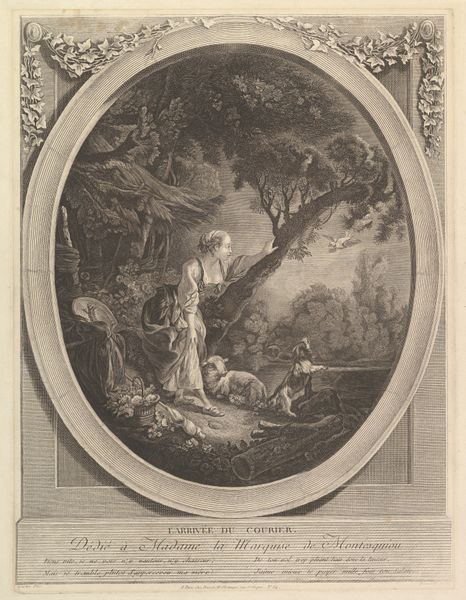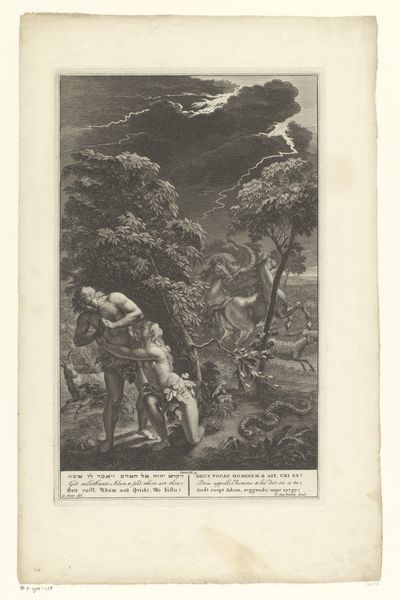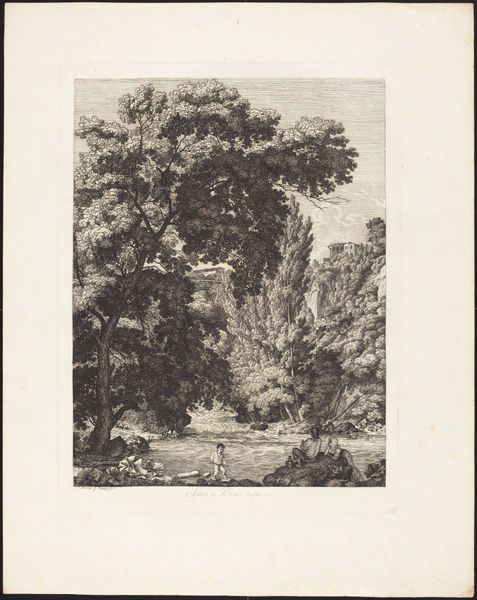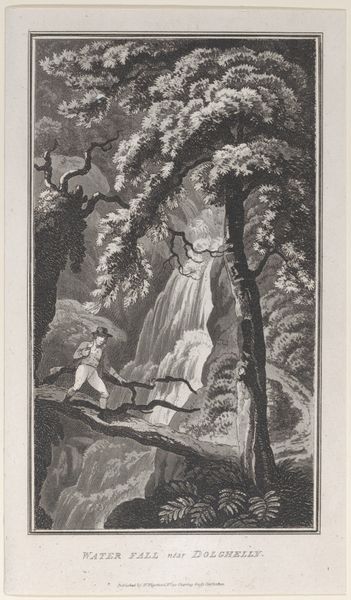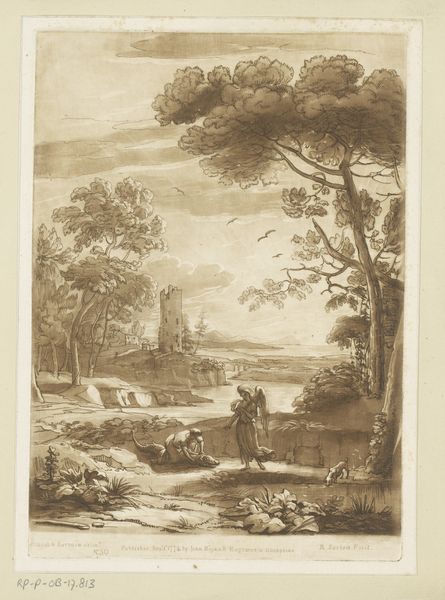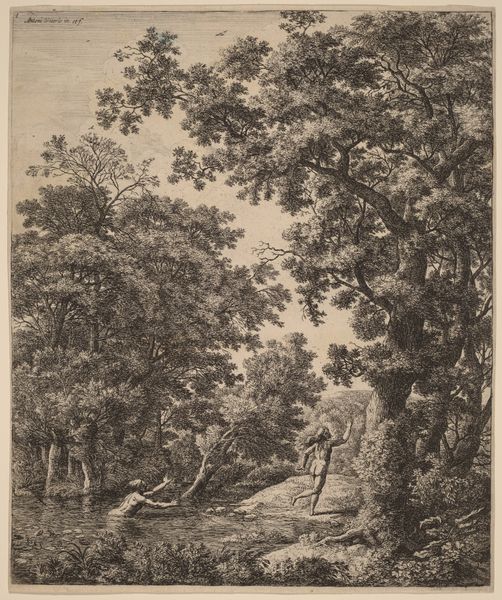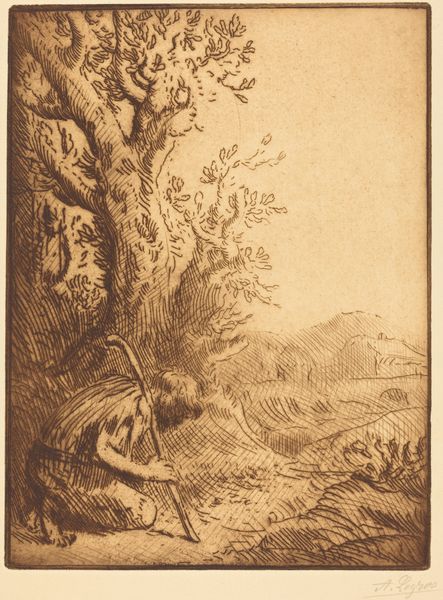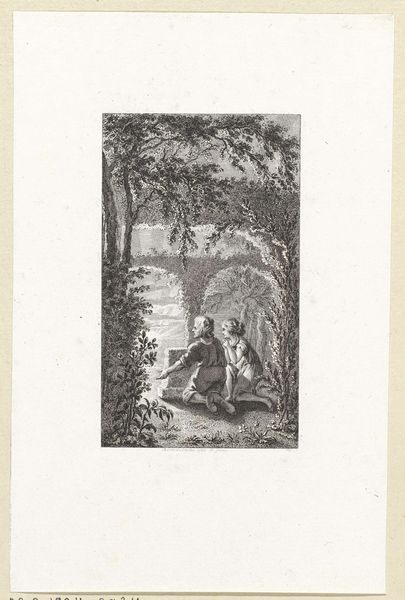
print, engraving
# print
#
landscape
#
classical-realism
#
etching
#
history-painting
#
engraving
#
botanical art
Dimensions: 200 mm (height) x 133 mm (width) (brutto)
Editor: This print, "Nattergalen og St. Hans Ormen," created in 1759 by Hans Quist, is an engraving. I’m struck by its contrasting textures and the rather subdued moonlit mood despite the industrious labor involved. How should we look at this artwork? Curator: Let’s consider the means of its production, since this heavily informs the image itself. Note the social context of printmaking in the 18th century: the labor involved, the distribution networks. The materials – the copper plate, the ink, the paper – dictate the aesthetic and also make the artwork accessible to a wider audience. Does this ease of reproduction impact its artistic value? Editor: I hadn't considered how its inherent reproducibility might shape perceptions of its value. So, you’re saying the materials and methods aren’t just tools, but active participants in the artistic statement? Curator: Precisely. The sharp lines and contrasting shades, results of the engraving process, depict what appears at first to be a conventional, classically real landscape, but is something more due to that specific labour. How are "high art" landscape and supposedly lower crafts like printmaking engaged here, through the commodified consumption of images of nature? Editor: It does blur that boundary. Considering its title, I thought it was only nature for nature’s sake, but its distribution and purpose of consumption adds complexity to its meaning. Curator: Right, we tend to see “landscape” and think of it outside a marketplace but every print is something being made to be sold to and possessed. Reflect on how mass reproduction, early capitalism, and notions of artistry intersect here to inform what we perceive. Editor: That makes so much sense! I'm starting to understand how focusing on production transforms how we experience the final art object. Thanks for opening my eyes to that. Curator: And I, yours, by seeing it afresh by thinking about how the labor produces the “natural.”
Comments
No comments
Be the first to comment and join the conversation on the ultimate creative platform.
